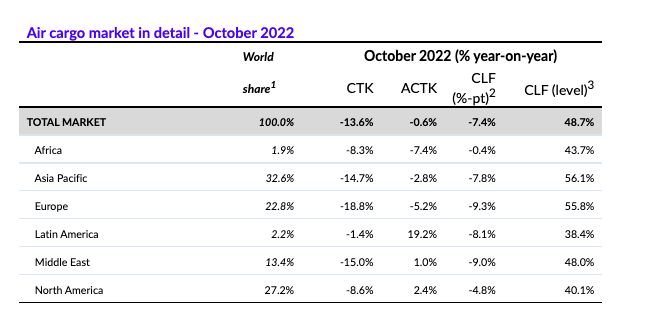The International Air Transport Association (IATA) released data for October 2022 global air cargo markets showing that headwinds continue to affect air cargo demand.
Global demand, measured in cargo tonne-kilometers (CTKs), fell 13.6% compared to October 2021 (-13.5% for international operations.
Capacity was 0.6% below October 2021. This was the first year-on-year contraction since April 2022, however, month-on-month capacity increased by 2.4% in preparation for the year-end peak season. International cargo capacity grew 2.4% compared to October 2021.
New export orders, a leading indicator of cargo demand, are shrinking in all markets except China and South Korea, which registered slightly higher new export orders in October.
Latest global goods trade figures showed a 5.6% expansion in September, a positive sign for the global economy. This is expected to primarily benefit maritime cargo, with a slight boost to air cargo as well.
The US dollar has seen a sharp appreciation, with the broad real effective exchange rate in September 2022 reaching the highest level since 1986. A strong dollar affects air cargo. As many costs are denominated in dollars, the currency’s appreciation adds another layer of cost on top of high inflation and high jet fuel prices.
The Consumer Price Index increased slightly in G7 countries in October and remains at a decades’ high level of 7.8%. Inflation in producer (input) prices reduced by 0.5 percentage points to 13.3% in September.
READ; Emirates Increases Services to Nairobi to Double Daily Flights




